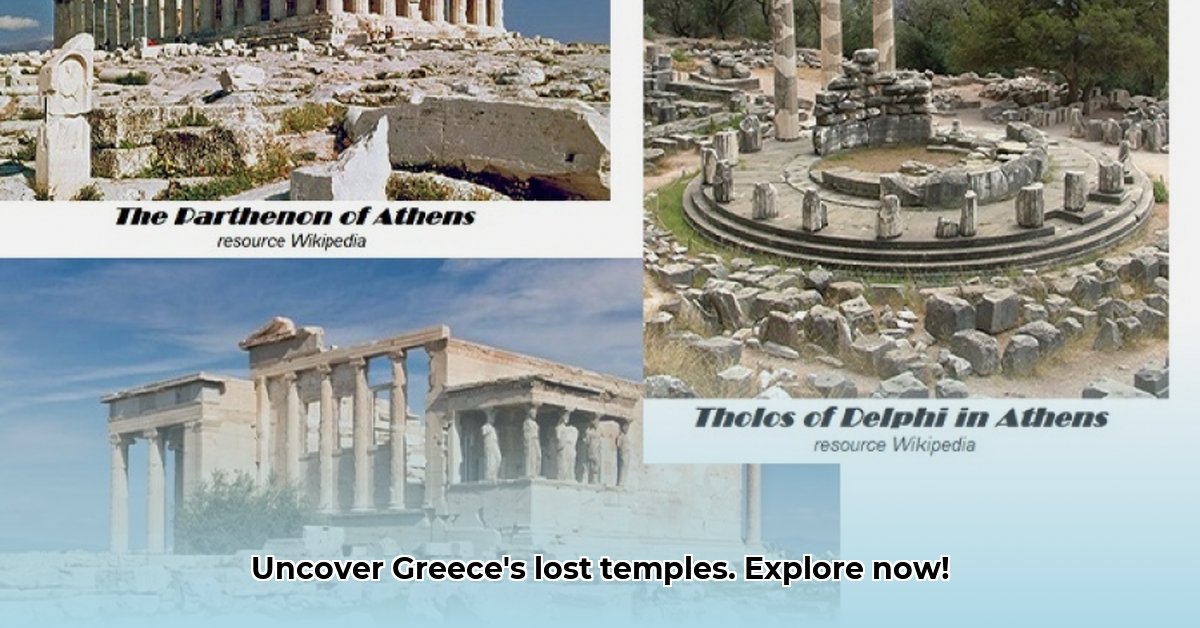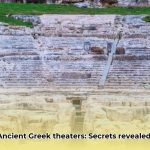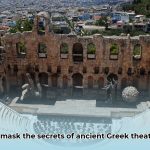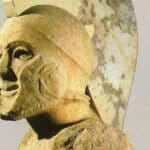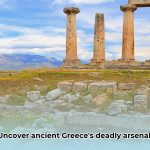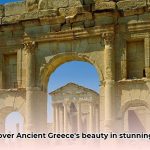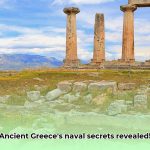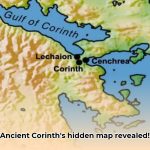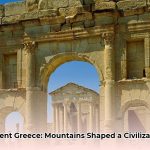Journey back in time to ancient Greece, where majestic temples evoke tales of gods and heroes. More than mere structures, these were the epicenters of Greek life, serving as places of worship, community hubs, and even treasuries. Explore the architectural brilliance—from the stoic Doric columns to the graceful Ionic spirals—and explore the design secrets. Learn more about the different column types here. Discover how these temples bridged the gap between people and their deities, delve into the rituals they hosted, and witness their survival (and occasional decline) through centuries marked by earthquakes, wars, and neglect. Finally, explore current preservation initiatives and learn how you can help preserve their legacy for future generations.
Exploring the Architectural Legacy of Ancient Greek Temples
Uncover the captivating realm of ancient Greek temples, from their architectural grandeur to the ongoing preservation efforts aimed at securing their existence for generations to come. These structures are not merely buildings; they encapsulate religious convictions, artistic prowess, and the very essence of daily life. Are you ready to embark on a journey through time and unearth the secrets concealed within these age-old stones?
Architectural Styles: Decoding Doric, Ionic, and Corinthian Orders
Ancient Greek temples were far from uniform; three primary styles, known as “orders,” dictated their distinctive appearances: Doric, Ionic, and Corinthian.
- Doric: Envision robust, unadorned columns, akin to steadfast pillars supporting the heavens. The Temple of Hephaestus in Athens stands as a magnificent and remarkably well-preserved specimen. Characterized by its simplicity, the Doric order exudes strength and stability.
- Ionic: Picture something more refined and graceful, with columns adorned with elegant volutes (scroll-like ornaments) at the capital. The Erechtheion on the Acropolis exemplifies this order; its beauty is simply awe-inspiring. The Ionic order embodies sophistication and aesthetic refinement.
- Corinthian: The most ornate of the three, this order boasts elaborate capitals embellished with acanthus leaves. The Temple of Olympian Zeus in Athens, though largely in ruins, once showcased the grandeur of the Corinthian style. This order signifies opulence and artistic flair.
These architectural styles evolved over time, with regional variations adding distinctive character. These subtle nuances likely reflected evolving artistic sensibilities and the preferences of individual patrons and communities. Some experts propose that the more elaborate Corinthian style emerged later as an indication of increased affluence and artistic sophistication.
Religious Significance: Shrines for Gods, Hubs for Rituals and Offerings
These temples were not mere edifices; they were sacred precincts, abodes for the Greek gods and goddesses. The cella, or inner sanctuary, housed the cult statue of the deity—the focal point of worship. Daily life revolved around these temples. Rituals, sacrifices, and offerings unveiled much about ancient Greek beliefs and values. Votive offerings, ranging from simple trinkets to elaborate works of art, offer insights into the hopes, aspirations, and anxieties of the people. Archaeologists are continually uncovering and analyzing these offerings, thus deepening our comprehension of ancient Greek religion and culture.
Multifaceted Roles: Temples as Community Centers and Political Hubs
Ancient Greek temples extended beyond their religious function, serving as community centers and hosting political gatherings, festivals, and even storing important documents. Envision the vibrant activity surrounding these structures—debates, celebrations, and moments of quiet contemplation; temples were integral to the social fabric of ancient Greece, underscoring the deep integration of religion into daily life. In times of crisis, temples served as safe havens for the community.
“These temples highlight the diverse needs they served within the community, extending beyond their religious function,” observes Dr. Eleni Stavrou, Professor of Archaeology at the University of Athens.
Preservation Challenges: Battling Natural Forces and Human Impact
Regrettably, time and human history have been unkind to these ancient wonders. Earthquakes, fires, and the relentless effects of weather have taken their toll, as have human actions, such as the reuse of materials and deliberate destruction. Climate change adds another layer of concern, as escalating sea levels and extreme weather events pose an increasing threat. The stark contrast between the well-preserved Temple of Hephaestus and the dilapidated Temple of Artemis at Ephesus illustrates the diverse preservation challenges.
Preservation Efforts: Safeguarding Ancient Landmarks
Protecting these magnificent temples requires a global effort. Archaeologists meticulously document and restore surviving structures, employing advanced technologies like 3D modeling to reconstruct damaged elements. Historians research each temple’s unique history and significance, providing vital context. Governments allocate funds to preservation projects and enact protective regulations, while tourism boards promote responsible tourism, ensuring visitors appreciate the historical importance without causing harm. Collaboration across these sectors is vital to maximize effectiveness.
Actionable Preservation Strategies: A Collaborative Approach
| Stakeholder Group | Short-Term Actions (0-1 year) | Long-Term Actions (3-5 years) |
|---|---|---|
| Archaeologists & Historians | Detailed site surveys; advanced digital documentation; initial restoration planning | Continuous monitoring; advanced materials analysis; scholarly publications and outreach; collaborative research projects; development of non-invasive investigation techniques. |
| Government Agencies | Secure immediate funding for repairs; implement protective regulations; launch awareness campaigns; restrict access | Long-term preservation initiatives; sustained funding for maintenance; promote international collaboration; establish buffer zones around sites; enforce stricter penalties for vandalism and looting; integrate cultural heritage preservation into urban and regional planning. |
| Tourism Boards | Develop sustainable tourism plans; improve visitor infrastructure with minimal impact; educational materials | Partner with local communities; create interactive digital experiences; invest in responsible tourism training; promote off-season tourism to reduce overcrowding; implement carrying capacity limits; encourage eco-friendly transportation. |
The enduring legacy of ancient Greek temples transcends their physical existence. These structures serve as potent symbols of human creativity, religious conviction, and cultural accomplishments. Their continued survival hinges on our dedication to their preservation, ensuring that future generations can experience the awe and inspiration these breathtaking monuments evoke.
Climate Change Risks to Ancient Greek Temples
The Perils of a Changing Climate
Imagine the grandeur of the Parthenon, a testament to human ingenuity, now facing an existential threat: climate change. Rising sea levels endanger coastal sites, erratic weather patterns inflict damage, and fluctuations in temperature and humidity erode the very stones that form these ancient structures. How can we safeguard these irreplaceable treasures, especially when experts project a potential loss of up to 30% of coastal archaeological sites within the next century due to rising sea levels 1?
Architectural Styles: Assessing Vulnerability
Ancient Greek temples showcased three primary architectural orders: Doric, Ionic, and Corinthian. Each order’s unique characteristics affect its vulnerability to climate change. While the sturdy Doric order may appear more resilient, even this style is susceptible to extreme weather. The more delicate Ionic and Corinthian orders are even more vulnerable to environmental factors. Regional variations in construction materials further complicate preservation efforts.
Religious Sanctuaries and Community Hubs
Beyond their religious function, these temples served as civic centers; political debates, festivals, and even storage occurred within their walls. Their significance extended far beyond worship; they were the very essence of ancient Greek communities. Protecting these structures equates to protecting a crucial aspect of our shared human heritage.
Threats to Survival: A Multifaceted Challenge
Numerous interconnected threats loom large: wildfires, floods, and erosion relentlessly degrade these ancient stones. Human actions, even with good intentions, can cause damage; improper restoration techniques and unregulated tourism contribute to further degradation. Are we equipped to meet the challenge of ensuring the survival of these monuments?
Preservation: A Symphony of Collaboration
Preservation requires a global effort involving archaeologists, historians, governments, and local communities. International organizations, such as UNESCO, must provide funding and support. Tourism boards also play a crucial role; responsible tourism practices are essential to minimize further damage.
Actionable Preservation Steps
To combat climate change effectively, consider these essential measures:
- Enhanced Monitoring Systems: Implement advanced systems to detect early signs of decay, utilizing sensors, satellite imagery, and drones.
- Customized Protection Strategies: Develop site-specific protection plans tailored to the unique vulnerabilities of each temple.
- Climate-Resilient Materials Research: Research and implement new, climate-resistant materials for repairs and restoration projects.
- Sustainable Tourism Practices: Introduce stricter regulations on visitor access, incorporating crowd control, timed entry, and guided tours.
- Community Engagement Initiatives: Educate locals and tourists about the importance of preservation and the threats posed by climate change.
- International Funding and Expertise: Secure funding and expertise from international organizations to support comprehensive preservation efforts.
Securing the Future: A Collective Responsibility
The future of these extraordinary temples rests in our hands. We must act decisively to ensure that future generations can appreciate their beauty, history, and enduring significance. Addressing the impacts of climate change is critical to their long-term survival. This responsibility belongs to us all.
Evolution of Ancient Greek Temple Construction: Materials and Techniques
Mastering Materials and Techniques
How did ancient architects and builders accomplish such feats of engineering and artistry, and what can we learn from their methods?
The evolution of ancient Greek temple construction is inextricably linked to the development of architectural orders: Doric, Ionic, and Corinthian. These distinct styles influenced the entire construction process. The sturdy Doric order often utilized readily available limestone, whereas the more ornate Ionic and Corinthian orders frequently incorporated gleaming white marble, demanding more sophisticated techniques. The materials and construction methods reflected a shift in aesthetic ideals.
Materials: A Transition from Stone to Marble
Early Greek temples relied on readily available materials like limestone, frequently employing basic dry-stone masonry techniques. However, the pursuit of aesthetics and durability eventually led to a preference for marble, particularly during the Classical period. Marble’s inherent beauty, strength, and ability to be finely carved made it a highly sought-after material.
Advances in Construction Techniques
Lifting and positioning massive marble blocks required engineering ingenuity. The Greeks developed sophisticated systems of levers, pulleys, and scaffolding, enabling them to erect enormous structures. While specific details remain debated, evidence suggests they possessed an impressive understanding of leverage and weight distribution principles. The precision of their work reflects a high level of skill and meticulous planning, a testament to their organizational abilities and engineering prowess.
Decorative Flourishes
The evolution of ancient Greek temple construction also involved the integration of decorative elements. Intricate carvings, vibrant painted surfaces (polychromy), and the addition of sculptures were integral to the construction process. These elements were not mere afterthoughts; they were central to the religious and cultural significance of the temples.
Preservation Challenges: Battling the Elements
The passage of time has taken a toll on these ancient structures. Natural disasters, such as earthquakes, have damaged or destroyed many temples. Human intervention, including looting and the repurposing of materials, has also posed significant threats. Modern-day preservation efforts face numerous challenges, ranging from climate change to the intricate procedures required to repair delicate structures.
Ongoing Preservation Efforts: Sustaining Legacy
The future of these ancient treasures hinges on ongoing research efforts. Archaeologists, architectural historians, and preservation specialists collaborate to study surviving temples, develop innovative conservation techniques, and educate the public about their significance. These efforts refine our understanding of ancient Greek temple construction, which helps us safeguard these remarkable monuments for centuries to come.
Religious Practices and Rituals within Ancient Greek Temples Across Regions
Exploring Sacred Customs
How did religious practices vary across different regions of ancient Greece?
The varied architectural styles of ancient Greek temples reflect the diverse ways in which faith was expressed throughout the Greek world.
Architectural Styles: Regional Influence
Standing before a temple, the design speaks volumes. Is it the strong, imposing Doric style, the elegant Ionic, or the ornate Corinthian? Ancient Greek architecture reflected regional styles that evolved over centuries. The Doric order dominated early temples, particularly in mainland Greece, while the more decorative Ionic and Corinthian styles gained popularity later, commonly found in Ionia and Athens, respectively. Each order communicated the culture and beliefs of the time.
Religious Significance: Rituals and Deities
Ancient Greek temples served as homes for the gods. Religious practices varied, but the core purpose remained constant: to honor the deities and seek their blessings. Each temple was dedicated to a specific god or goddess, and rituals, including sacrifices, processions, and offerings, were performed within their sacred walls.
Multifaceted Community Hubs
Temples served multiple functions beyond worship, acting as the center of community life and hosting political gatherings and festivals.
“Consider the significance of the temple as a social and economic engine, not just a religious precinct,” states Dr. Nikos Papandreou, Professor of Ancient History at the University of Crete.
Regional Variations in Religious Practices
While core beliefs remained consistent, religious practices exhibited fascinating regional variations. Deities held different levels of importance in various areas. Poseidon, god of the sea, was strongly revered in coastal regions, while Zeus held prominence in the heartland. These regional variations enriched the tapestry of ancient Greek religion.
Preservation Challenges
Sadly, many ancient temples have suffered damage from natural disasters, warfare, and ill-conceived restoration attempts. The ongoing battle to protect and restore them underscores their enduring value. Current challenges include climate change and pollution.
Preservation Efforts: A Collective Mission
Preserving ancient Greek temples requires a multi-faceted approach involving archaeological research, careful restoration, and public awareness, with international collaboration as an essential component. Governments, museums, and local communities play vital roles, from funding restoration projects to educating the public and curbing illegal activities.
- Discover Ancient Greece Weapons: A Comprehensive Guide to Military Technology - August 8, 2025
- Discover Ancient Greek Swords: A Comprehensive Guide - August 8, 2025
- Explore Ancient Athens: Unveiling the City’s Secrets Through Maps - August 8, 2025
